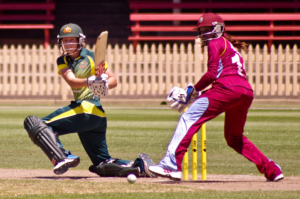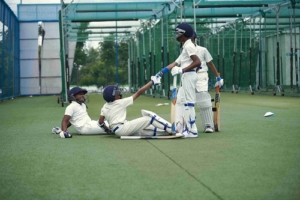Welcome to our in-depth guide to the 10 types of out in cricket. This piece explores the subtleties of each dismissal as it dives into the difficult art of getting batters out.
These times when a player leaves the crease holds great significance in the strategy and skill-filled game of cricket. Every sort of catch classic caught, accurate leg before wicket, and uncommon hit-wicket is broken down for a more thorough comprehension.
Come along with us as we explore the ten different kinds of 10 types of out in cricket and explore the meaning behind this important part of the sport.
We explore the world of cricket dismissals and learn about the subtleties of every kind, from the well-known caught to the unusual blocking of the pitch.
Umaima Saeed’s observations offer a gripping story that deepens your comprehension of the game’s crucial moments. Come celebrate the variety in getting players out in cricket with us.
List of the 10 Types of Out in Cricket: All You Need to Know
| S.NO | Type of out | Description |
| 1 | Caught | when the fielder catches the ball after the hitter hits it |
| 2 | Bowled | As soon as the ball strikes the stumps behind the batter |
| 3 | Leg Before Wicket | When the umpire believes the ball would have reached the wicket but for this interception, and the ball hits any portion of the batsman without first touching them |
| 4 | Stumped | When the striker steps in front of the crease to play the ball, the wicketkeeper places the wicket down with the ball, ensuring that neither his body nor the bat is outside the popping crease. |
| 5 | Run-out | When the ball is in play the stumps closest to the batter are placed down, and he is outside the popping crease |
| 6 | Obstructing the field | When a batter uses words or actions to hinder or distract the fielding side |
| 7 | Hit Wicket | During a stroke or a run, when the batsman moves his stumps with his body or the bat |
| 8 | Timed Out | when it takes a batter who is coming on to take on a ball more than three minutes to get ready |
| 9 | Hit the ball twice | When the batter hits the ball two times, once legally and once on purpose |
| 10 | Retired out | When the batter departs the pitch for any reason other than illness or injury without the umpire’s permission |
1. Caught
The “Caught” dismissal method is one of the most common and visually striking ways to send a batsman back to the pavilion in the fast-paced game of cricket.
This traditional method of dismissal involves the batter hitting the ball with the bat and a fielder catching it without the ball touching the ground.
The word “Caught” covers a range of situations, each of which complicates this seemingly simple dismissal.
A player in the slips, an outfield fielder, or even the wicketkeeper might grab a catch. A catch that is made by the wicketkeeper is called a “Caught behind.”
Fielders must carefully position themselves to take advantage of the batsman’s every move to execute the caught dismissal, which calls for a delicate balance of talent and precision.
It makes the game more exciting and suspenseful and makes it a memorable experience for both players and spectators.
2. Bowled
“Bowled” is a simple yet effective way to remove a batsman in the complex game of cricket. When a bowler delivers a valid ball and it strikes the stumps behind the batsman, the dismissal happens.
The blow may ricochet off the bat or the batsman’s body before striking the stumps, or it may strike the bat directly, displacing the bails.
Bowled dismissals demonstrate the bowler’s ability to 10 types of out in cricket and take advantage of any technical weaknesses in their delivery.
In cricket, the sound of the ball smashing into the stumps is frequently a dramatic and pivotal moment that signifies victory for the bowling side.
To make this dismissal effective, a bowler must be able to produce a ball that is either perfectly pitched or effectively disguised.
It draws attention to the never-ending struggle between bat and ball, which puts the batsman’s fortitude and the bowler’s accuracy to the ultimate test.
3. Leg Before Wicket
The Leg Before Wicket (LBW) is a subtle and often contested method of dismissal in cricket that adds layers of intricacy to the already complex game.
When a valid delivery hits a batter without first making contact with the bat or glove and lands on any area of the batsman’s body, typically the leg, this method of getting out is employed.
LBW dismissals are frequently the result of strategic choices made by bowlers who want to take advantage of technical flaws in a batsman’s game, particularly when it comes to spin deliveries or well-executed swing bowling.
The 10 types of out in cricket, and the advent of technologies such as ball-tracking and a Decision Review System (DRS) have increased the level of scrutiny and accuracy around LBW judgments, leading to heated debates among fans, pundits, and players.
The rules governing LBW have changed over time to reflect the dynamic character of the game.
4. Stumped
In cricket, “Stumped” is a unique and calculated method of dismissal that elevates the action, particularly when spin bowlers are involved.
When a batsman is effectively dismissed by the wicketkeeper, who removes the bails while the striker is out of the crease and not trying to make a run, this unusual approach is employed.
The wicketkeeper must react quickly, be agile, and anticipate when making a stumping dismissal.
Stumpings are more common in games involving slow bowlers because they lead to scenarios where hitters overcommit when attempting to counter-spin.
This types of out in cricket highlights the mental struggle between the bowler and the batter and gives the game a tactical element. Stumping demonstrates a wicketkeeper’s ability to read the game.
5. Run-out
Run Out is a powerful and dynamic types of out in cricket that requires precision and collaboration to pull off.
When a batsman tries to run but is unable to get to the popping crease before the fielding side successfully removes the bails, this method of getting him out occurs.
Run-outs frequently occur during quick-thinking and deft fielding plays, as players work together to keep the batters from scoring.
Suppose the fielding side can shatter the stumps and send the batter back to the pavilion.
10 types of out in cricket are a vital feature of the game since the batters are especially vulnerable during rapid singles or when trying to steal an additional run.
The use of the Decision Review System (DRS) to guarantee accuracy in close run-out scenarios highlights the importance of technology in contemporary cricket.
6. Obstructing the field
In cricket, obstructing the pitch is a unique and uncommon kind of dismissal that happens when a batsman purposefully distracts or blocks the fielding side with words or actions.
This particular dismissal raises the level of complexity in the game because it takes into account behavioural subtleties in addition to physical characteristics.
In contrast to other dismissals, obstruction of the field is frequently a subjective call, with the umpire’s decision being the deciding factor in determining whether the batsman’s actions were deliberate and intended to hinder the fielding side’s attempts.
The rules about blocking the pitch have changed, placing more emphasis on sportsmanship and fair play.
Because blocking the field has historically been rare, each incident is noteworthy and occasionally contentious. Len Hutton in a 1951 Test match against South Africa is one famous example.
7. Hit Wicket
One of the rarest but most devastating types of out in cricket is “Hit Wicket,” which happens when a batsman unintentionally moves their stumps with their body or bat whilst trying to make a hit or score a run.
This self-inflicted dismissal style frequently twists a game by highlighting the thin margin that separates a successful shot from an unintentional exit. Hit wicket dismissals highlight the significance of control and accuracy in cricket.
They can occur from a batsman losing balance, colliding with the stumps, or unintentionally hitting the stumps with their bat during a shot.
These kinds of incidents give the game a sense of unpredictability and highlight the physical and emotional strain that batters must endure.
A hit wicket dismissal keeps players and fans on the edge of their seats by serving as a reminder that in cricket, even the best-laid plans may take an unexpected turn.
8. Timed Out
In cricket, “Timed Out” is a unique and uncommon kind of dismissal that happens when a batsman is unprepared to face the following delivery in the allotted time.
An unbeaten batsman faces the risk of being declared timed out if he takes longer than three minutes to warm up or if he waits to face the next ball after a break.
This rejection highlights the significance of playing at a steady pace and gives the game a fascinating new dimension.
A timed-out dismissal, which highlights the necessity for promptness in the fast-paced game of cricket, is the result of the batsman’s delay, in contrast to other dismissals that include on-field actions.
9. Hit the ball twice
When a batsman hits the ball more than once during their innings, either purposefully or inadvertently, it’s known as “Hit the Ball Twice,” a unique and fascinating types of out in cricket.
The batsman’s body or the ball rebounding off the bat are not grounds for a second strike; only purposeful hits are.
This unusual method of escape raises the difficulty level of the game since it necessitates a close examination of the batsman’s intentions and actions.
It is worth noting that in the lengthy history of Test cricket, no batter has ever been formally declared out for hitting the ball twice.
This makes it a strange and unusual occurrence.
A dismissal for hitting the ball twice demonstrates the accuracy and composure required in cricket and draws attention to the thin line that separates deliberate rule violations from deft shot-making.
Even though it happens infrequently, it adds a unique chapter to the various ways a batsman might get out of the crease.
10. Retired out
The 10 types of out in cricket is one of the “Retired Out” refers to a dismissal that happens when a batsman leaves the pitch willingly and without the umpire’s permission for any cause other than illness or injury.
A batsman who is declared retired is unable to play again, in contrast to “Retired Hurt,” where they can return to complete their innings after recovering.
A dimension of strategic decision-making is added to the game by this dismissal because batsmen may decide to retire for a variety of reasons, including personal or team-related ones.
The fact that a batsman cannot return to the game after being retired emphasizes how final the decision is. Such dismissals, as occurred in the IPL 2023.
Conclusion
In Conclusion, 10 types of out in cricket of the variety of dismissal techniques used in cricket create a complex strategic fabric full of unexpected turns.
Every option adds a distinct flavour to the game, ranging from the traditional catches to the subtle leg before the wicket moves.
During the complex dance between bat and ball, players make dismissals that highlight the dynamic essence of the sport.
Cricket’s dismissal systems, such as the infrequent “Hit Wicket” and the punishing “Timed Out,” add to the game’s unpredictable nature and captivate spectators.
These exit strategies serve as evidence of the dynamically changing nature of cricket and its ongoing appeal on a worldwide scale as the game develops.
Also, check out Top 10 Batsmen with the Most Fifties in ODI Cricket [2023]







